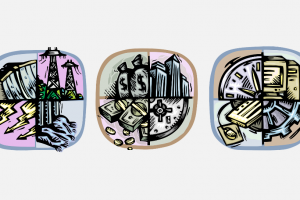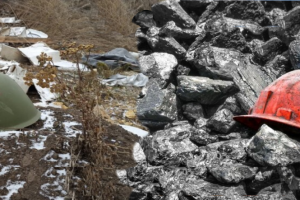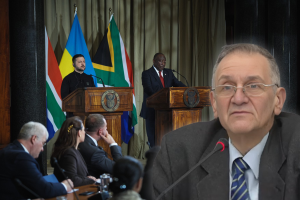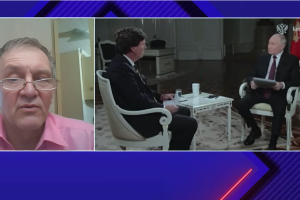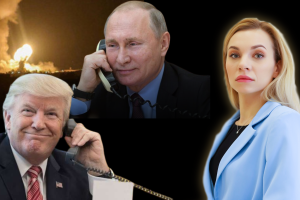What Are Ukrainians Thinking About? Professor Haran Explains

Polls show Ukrainians are hopeful and concerned: professor Olexiy Haran on public opinion trends.
Hello and welcome to this week’s episode of Ukraine Calling. I’m Marta Dyczok for Hromadske Radio in Kyiv.
 FEATURE INTERVIEW: POLLS SHOW UKRAINIANS ARE HOPEFUL AND CONCERNED: OLEXIY HARAN TALKS TO MARTA DYCZOK ABOUT PUBLIC ОPINION TRENDS
FEATURE INTERVIEW: POLLS SHOW UKRAINIANS ARE HOPEFUL AND CONCERNED: OLEXIY HARAN TALKS TO MARTA DYCZOK ABOUT PUBLIC ОPINION TRENDS
Read more at Hromadske radio: https://hromadskeradio.org/en/programs/ukraine-calling/polls-show-ukrainians-are-hopeful-and-concerned-professor-haran-tells-about-public-opinion-trends
Read more at Hromadske radio: https://hromadskeradio.org/en/programs/ukraine-calling/polls-show-ukrainians-are-hopeful-and-concerned-professor-haran-tells-about-public-opinion-trends
Read more at Hromadske radio: https://hromadskeradio.org/en/programs/ukraine-calling/polls-show-ukrainians-are-hopeful-and-concerned-professor-haran-tells-about-public-opinion-trends
Read more at Hromadske radio: https://hromadskeradio.org/en/programs/ukraine-calling/polls-show-ukrainians-are-hopeful-and-concerned-professor-haran-tells-about-public-opinion-trends
Read more at Hromadske radio: https://hromadskeradio.org/en/programs/ukraine-calling/polls-show-ukrainians-are-hopeful-and-concerned-professor-haran-tells-about-public-opinion-trends
Read more at Hromadske radio: https://hromadskeradio.org/en/programs/ukraine-calling/polls-show-ukrainians-are-hopeful-and-concerned-professor-haran-tells-about-public-opinion-trends
Read more at Hromadske radio: https://hromadskeradio.org/en/programs/ukraine-calling/polls-show-ukrainians-are-hopeful-and-concerned-professor-haran-tells-about-public-opinion-trend
Read more at Hromadske radio: https://hromadskeradio.org/en/programs/ukraine-calling/polls-show-ukrainians-are-hopeful-and-concerned-professor-haran-tells-about-public-opinion-trends
Dyczok: What are Ukrainians thinking about during these dog days of summer? I’m Marta Dyczok for Hromadske Radio in Kyiv. I have with me in studio one of the leading experts on public opinion in Ukraine, a regular guest on our Ukraine Calling show, Professor Olexiy Haran from the National University of the Kyiv Mohyla Academy. And, he’s also the Research Director for the Ilko Kucheriv Democratic Initiatives Foundation that recently released the results of a new report. Professor Haran, thank you very much for finding the time to speak to us.
Haran: Thank you for the invitation.
Dyczok: Your organization, the Democratic Initiatives Foundation, has been doing a lot of polling over a number of years. You have a pretty good sense of what Ukrainians are thinking about. What are some of the main issues that keep coming up in all these reports that you do?
Haran: Well, I would start with some general trends. And these trends are confirmed not only by the research of our foundation, but also by the research of other institutions, including the academic Institute of Sociology of the Academy of Sciences of Ukraine. And I would start with general trends and changes in public opinion in Ukraine which happened after 2014.
Dyczok: So, when the war started.
Haran: After the Revolution of Dignity and the war. So, first of all, regarding changes in people’s self-identification. We are monitoring this over the years, so we can see trends.
Dyczok: You see the annual changes.
Haran: Yes, exactly. Usually we pose the question in such a way: “Whom do you consider yourself, first and foremost?” And we provide them with a few options. Option number one is ‘citizen of Ukraine.’ Option number two is regional identity, which means identification with the region, or some local identity, like a village, or a city. And we even have an option for identifying with the former Soviet Union. So, first of all, I would say that identification with the former Soviet Union collapsed.
Dyczok: How about Europe? Do you have a category for European identity?
Haran: Well, we have this. We have also ‘citizen of Europe,’ ‘citizen of the world.’ But the dominant now is identification with Ukraine. So, citizen of Ukraine is the number one identification.
Dyczok: And this is number one by far? Is it fifty-one percent? Or eighty-five percent? I mean roughly. Is it just over half, or is it a significant majority?
Haran: Well, actually, it’s more than sixty percent, and this is a significant majority. Because we see that this identification is dominant now throughout all of Ukraine, in all regions, which is very important. Because, for example, previously, in the Donbas, the number one identification regional identity.
Dyczok: Before 2014.
Haran: Before 2014, yes. Now the plurality would be [is] in favour of considering themselves as being citizens of Ukraine. So, this change is very, very important. We also have a question, ‘are you proud to be a Ukrainian citizen?’ And, again, here we have a serious change, because most people are proud to be citizens of Ukraine. Again, this is for all regions. This is very important because now, in times of democracy that we have, we have the possibility to criticize. To criticize the government. To criticize the President. And we have this criticism on every channel of information.
Dyczok: In the public sphere.
Haran: Yes. Everywhere. And, basically, Ukrainians are dissatisfied with how things are going in the economic sphere, in fighting corruption. There’s a lot of dissatisfaction. And a lot of criticism. And sometimes we hear from the opposition, or from some TV channels, that, ‘Everything is lost. Nothing has changed.” In Ukrainian it’s, ‘всьо пропало.’ #зрада або пернмога. Which means…
Dyczok: Treason.
Haran: Betrayal or Victory. So, a very simplified picture.
Dyczok: Black or white.
Haran: It happened. This is betrayal. Everything is lost. So, people area actually dissatisfied with the pace of reforms. But when you ask them, ‘Are you proud to be a Ukrainian citizen?’ you see the trend. And the trend is yes, people are proud to be Ukrainian citizens.
Dyczok: I don’t know if you have the statistics handy, but can you give us an idea of a comparison with, let’s say 2013 and 2015, 2016? You’re saying now the majority is saying they’re proud. But how many people were proud before the Revolution of Dignity?
Haran: Let me see. I have this. For example, we can compare with the year 2002.
Dyczok: Sure.
Haran: That gives a long period. And, actually, the number of those who are proud, and the number for whom it’s difficult to say would be around forty percent. So, forty percent are proud, forty percent find it difficult to say, and almost twenty percent saying no, we are not proud.
Dyczok: That’s very interesting because that’s quite high. Forty percent in 2002. Wow, interesting.
Haran: Yes. But now the percentage of those who are proud is 60 percent.
Dyczok: That’s quite a jump.
Haran: It’s a dramatic increase. This is despite the fact that you have dissatisfaction in the country.
Dyczok: Sorry to interrupt, how many people are dissatisfied? Because you said before twenty percent were not proud to be Ukrainian. What is that statistic?
Haran: Let me see. Basically, the number for those who are not proud is around eighteen percent right now. But the main change is with those who responded, ‘difficult to say.’ In 2002 it was forty percent, people didn’t know what to say. And now it dramatically declined to twenty percent.
Dyczok: So, the undecided have decided.
Haran: Yes. Correct.
Dyczok: That’s very interesting.
Haran: We also ask about emotions, how people feel, what feelings do they have right now when they think about the future of Ukraine. They can choose between different categories, emotions. Like optimism, hope, fear, concern, and some others. The optimists are not in the first place. But the number one choice is hope.
Dyczok: Interesting!
Haran: Hope. The number two choice would be concern. In Ukrainian we have two words, страх and тривога. Cтрах is fear. Fear is quite low. But тривога, which is difficult to translate, but is something like concern, uncertainty, this is the number two choice.
Dyczok: Can you quantify that for us? Number one, is it fifty percent? Twenty percent?
Haran: Hope is more than forty-five percent.
Dyczok: Wow! So, almost half the population is hopeful.
Haran: Forty-five percent.
Dyczok: And concerned?
Haran: Concerned would be thirty-five percent.
Dyczok: So again, pretty high. But those are the two dominant –
Haran: Yes, these are dominant. And well I think it reveals the real situation. Because for example myself, have I hope? Yes, definitely I have hope for my country, and I believe that in future yes, Ukraine has a future. But at the same time, am I concerned with what’s going on in my country? What about my personal life, how my personal life would be affected by the war or by social economic changes? Yes, I have concern about that. So…
Dyczok: Do you give people the option of choosing two things? So, people can choose hope and concern? Or they have to just choose one? Because what you just said is so interesting because a lot of people have mixed feelings. And it’s reasonable to…
Haran: This is a combination and yes, there is a possibility to choose. So, you may have several options. But again, so I would say it’s quite contradictory.
Dyczok: Well I would say that’s quite rational because on the one hand you have hope, but you have real reason for concern.
Haran: Yes, it’s rational, but again, people are dissatisfied in general, and people have concerns. But they still have hope. So, this is important, and again, if you have a regional breakdown –
Dyczok: That was going to be my next question. What are people in the areas that are closer to the war, what does that picture look like? Because they must have more –
Haran: Surprisingly positive, so hope is forty-three percent. Concern is, let me see here…
Dyczok: Professor Haran is checking his statistics here.
Haran: Yes, I need to have spectacles to see the graphs. Let me see…
Dyczok: So, hope is still the number one emotion, even in the war area.
Haran: Right.
Dyczok: And concern will still be the second one presumably, right?
Haran: Right, but I will give you exact figure. Sorry –
Dyczok: Well let’s not worry about that. I mean think it’s sort of what you’re saying is it’s a very similar pattern.
Haran: Yes, concern is more than twenty percent. And, also in the Donbas, fear, it would be eleven percent.
Dyczok: So that’s a little higher than the national average, or that’s lower, or about the same?
Haran: Well this would be basically the same. Again, we need to understand, the results that we have right now are quite positive, so we need to have some reservations here, because it shows quite optimistic results.
Dyczok: Surprisingly optimistic.
Haran: Surprisingly, so maybe it’s lower, because when people are answering questions they might have some hesitations. So maybe in reality it’s not so high. But I mean still there’s the trend. But we may analyze for example regarding the war, we have also results regarding Donbas situation, situation in the occupied areas, and here…
Dyczok: Sorry, you have data from the occupied areas? Or just from the areas that are close to the war zone on the Ukrainian controlled side?
Haran: No, we have the possibility to conduct polls only in the Ukrainian controlled Donbas. So basically it’s about the war, it’s about the situation with the occupied territories, the future. And here again we have the general feeling in the country, but specifics in the Donbas, east and south of Ukraine would be a bit different.
Dyczok: Can you tell us a little bit about the specifics of what you’re finding, what kind of questions you’re asking, what are the results?
Haran: For example, traditionally we are asking the question: do we think it’s necessary to have a compromise with Russia, and the leaders of the self-proclaimed republics? And we have three options. One is no, we shouldn’t have any compromise, and the peace could be established only by the use of force.
Dyczok: That’s quite a radical solution.
Haran: It’s a radical solution, so totally in Ukraine it’s supported by about seventeen percent [of the population]. So, people who still believe it’s still possible to have military solution. Then the other choice is we need to have peace at all costs.
Dyczok: So, accept the status quo and end the war.
Haran: Not only the status quo, but actually accept the proposals which were made by Putin for example, and which are included somehow in the Minsk Agreements, like so-called special status, full amnesty, and so on and so forth. And, actually, in Ukraine this is supported by twenty percent. So again, it’s not the whole Ukraine, twenty percent. The majority in the Ukraine, roughly half of those polled, would say that yes, we need to have compromises, but not all [of them]. So, not peace at any cost.
Dyczok: Some compromise.
Haran: Some compromises, yes. And again, these figures are quite stable. But when we have regional breakdown, regional breakdown would be quite different because for example –
Dyczok: My guess would be more people in the east would want peace at any cost, is that right?
Haran: Yes, correct. In the South, and East of the country because more people like in the East it would be twenty-seven percent, and in the South it would be thirty-three percent.
Dyczok: So that’s still not anywhere close to a majority, that’s still a quarter to a third.
Haran: It’s not the majority but actually these people, we need to understand that these people are tired of war, and they would like to have peace. Their feelings are, ‘We don’t care, we don’t care about politics, we don’t care about potential…’
Dyczok: ‘We don’t care who’s going to be in charge as long as the war stops.’
Haran: Yes, so let’s stop the war. Again, and this is a difference. And again –
Dyczok: Sorry to interrupt, do you do social economic breakdown? If so, what sorts of people are giving this kind of answer? Do you gather that data?
Haran: We have this data, unfortunately I don’t have it.
Dyczok: So, we’ll post a link to it on our website so that our listeners can go and read these reports in great detail. The reason I ask is I just wonder what sorts of people are that twenty-five to thirty-three percent?
Haran: When we are asking specific questions you definitely we will see a regional difference. Again, we cannot say that the country is totally polarized about that. But, definitely in the east and south, compromise is more acceptable, and these compromises sometimes are not acceptable for the west and the center of the country. So, I do not want to say that Donbas is thinking the same as the rest of the country, this is not true; in some cases, yes, in some cases, no. Let me, for example, give you figures of the attitude towards potential international peacekeepers.
Dyczok: Oh, that’s very interesting. This must be recent data.
Haran: In Ukraine, you will have majority which is positive about potential international peacekeeping mission in East Ukraine, so in the whole Ukraine it would be sixty per cent.
Dyczok: That’s very low. I’m surprised how low it is.
Haran: In the west, it would be eighty per cent.
Dyczok: It’s still low.
Haran: It’s high. In the centre it’s seventy per cent, in the south, it would be fifty-six per cent, but in the east, it is actually divided and more people are actually negative than positive, so positive are thirty-four per cent and negative are forty per cent.
Dyczok: When you say, “the east,” which…
Haran: The east, I mean…
Dyczok: The Donbas?
Haran: The Donbas plus Kharkiv, plus…
Dyczok: Zaporizhia? Dnipro?
Haran: Plus – yes – Zaporizhia and the Dnipropetrovsk region. So, this number would be quite… Here you see the difference, right?
Dyczok: That’s quite a difference.
Haran: What is my explanation to that? My explanation, it means that when we are talking about international peacekeepers it means that, in people’s minds, somebody is coming from other countries, maybe from the west, you will have troops which are on Ukrainian soil, and here you may have the stereotypes from the Soviet Union.
Dyczok: Sort of Old Cold War mentality?
Haran: And all this Cold War rhetoric and the west is blamed for everything going wrong in the Soviet Union or in the post-Soviet space. So again, in most of the regions, you have a positive view, but in the east you have divided opinions.
Dyczok: It would be interesting to break that down demographically and see which age categories have which attitudes because if the young people still have these Cold War views that’s something…
Haran: I can rely on what I have in my mind, and we have the social demographic characterises, for example, in attitude towards EU and NATO. And here, definitely, you see the older people are more sceptical, and the younger are feeling more inclined to accept both the EU and NATO.
Dyczok: If I have time for one more question, I wanted to ask you, what is it like conducting research in the area that is close to the front? Because you mentioned in one of your earlier responses that you weren’t sure whether the respondents were being overly positive. Do you find that because people are in a war zone they may not be answering questions as honestly, and what do you do with that, as researchers?
Haran: Frankly speaking, I think so. I think that some people they may not want to reveal what they think in reality, so for this purpose, as I am saying, when you have the figures, in order to avoid it, you need to increase the sample because now what we have is the national sample. You need to increase the sample and you need to have polls that target the Donbas specifically, and sometimes we have the possibility to have it. We did regional polling specifically in the Donbas with a larger sample in previous years. We will have it in the fall.
Dyczok: Oh, so we need to have you back in the fall when the fresh results are in.
Haran: Yes, we will have fresh results, and event more, we will have the possibility to conduct focus groups at the checking points when people are crossing the line.
Dyczok: Oh, right at the front line? That will be very interesting.
Haran: Yes. So, we hope we will have the possibility to check the views of those people who are in the occupied areas but who are traveling to Ukraine and vice versa.
Dyczok: But the question will be how can you be sure people are giving you honest answers? This is always my question to people who conducting polls.
Haran: This is still the question. When we are conducting focus groups, the difference with the poll, in focus groups, anyway, you will have opinions that will go to extremes, from one extreme to another.
Dyczok: Plus, people in discussion, they will…
Haran: Yes, so you have all these views, so you will be able to hear. When we are talking about focus groups, it’s not so much about statistics, you cannot measure statistically who is in favour of this, who is in favour of that, but you have a wide range of opinions.
Dyczok: It’s more of a qualitative than quantitative.
Haran: Yes, you have a wide range of opinions and you may compare it with the results of the poll, and again we will have an original poll in the Ukrainian-controlled region of Donbas so we will have more material to think about.
Dyczok: So, we will look forward to having you on the show once the results are published so we can get a clear view of what’s happening, if at all possible. Thank you very, very much for joining us. We have been speaking with Professor Olexiy Haran of the National University of Kyiv-Mohyla Academy and Democratic Initiatives Foundation. I’m Marta Dyczok. Thanks for listening.

